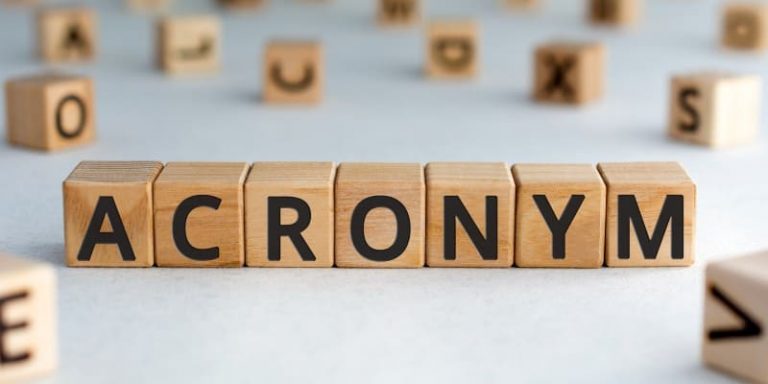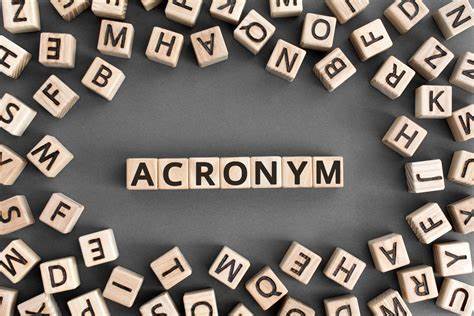Abbreviations and Acronyms

2FA— or two-factor authentication
AI—Artificial Intelligence
ATH—All Time High (of crypto price).
AML—Anti-Money Laundering; these laws require exchanges to obtain information and activities about their customers.
API—Application Programmer Interface. (Used for creating applications.)
APR—Annual Percentage Rate
ATL—All Time Low; in the crypto world it refers to the lowest price a cryptocurrency has ever reached
ASIC (Miners)—Created and sold by Jihan Wu from China, the computer type machine was created to be more efficient for crypto mining than typical CPU’s and GPU’s.
ASIC (Resistant)—Coins that don’t require big bucks equipment; the mining done on this equipment is supposedly fairer and more decentralized than coins that are not resistant
AUM—Assets under management
BIP—Bitcoin Improvement Protocol—A new feature proposed for Bitcoin are BIPs
BNB—Binance Coin; ERC20 token on the Ethereum blockchain.
Brics—Brazil, Russia, India, China, South Africa (Iran, Egypt, Ethiopia, United Arab Emirates—originally organized for investment opportunities. Recently reached final stages of de-dollarization system with new payment system which competes with the FRN or U.S. dollar.
BTC—Bitcoin’s ticker symbol
CTA—Call to Action
DAA—Digital Asset Array—portfolio of different cryptocurrencies.
DAG—Directed Acyclic Graphs; instead of chain of blocks architecture used for crypto projects DAG is an alternative. (Also called Tangle).
dApps—Distributed Apps (they have no centralized control.
DDoS—Distributed Denial of Service or DDoS Attack —where malicious entity shuts down another individual’s internet connection by overloading requests.
DeFi—Decentralized Finance; based on the use of decentralized blockchains and smart contracts as to create new types of financial products.
DEX—Decentralized Exchange; not controlled by one authority but allows users to purchase and sell crypto.
DIF—Decentralized Identity Foundation; global initiative to create a identity verification system; uses blockchain technology to create this system that doesn’t require centralized authority as to identify someone.
DpoS—Delegated Proof of Stake; a consensus of blockchain nodes which vote on the correct version of the blockchain.
dPoW—Dynamic Proof of Work—a developing blockchain project
ETF—Exchange Traded Fund—groups of assets sold or purchased as a single asset; usually done by a centralized group.
ERC20—Standard for creating contracts on the Ethereum blockchain; also, ERC 721 and others.
ERC20 Token—the token that is issued on the Ethereum platform.
ETH—Ether tokens on the Ethereum platform which is required to create smart contracts or to send transactions.
EVM—Ethereum Virtual Machine—place where Ethereum is tested for executing smart contracts and promoting security.
FOMO—Fear of Missing Out
FRN—Federal Reserve Note
FUD—fear, uncertainty, and doubt (The goal of FUD is to get you to sell, not buy.)
GPU—Graphics Processing Unit; hardware used for mining crypto.

Hodl—(Hodler)—to hold onto cryptocurrencies and Bitcoin; a crypto person who holds on to coins; also: hold on for dear life.
IoT—Internet of Things; digitally connects physical objects online making them trackable.
IP Address—Internet Protocol Address
IPO—Initial Public Offering
IRS—Internal Revenue Service
ICO—Initial Coin Offering; where cryptocurrency goes public and sells coins in exchange for funds.
I2P—Invisible Internet Project; network layer that facilitates an anonymous censorship resistant communication between users.
KYC—Know Your Customer—in the Crypto world it refers to information gathered by exchanges as to comply with AML laws.
LTV—Loan to Value; ration of loan compared to value of an asset.
mBTC—1000 mBTC = 1 BTC
NFC—Near-Field Communication; devices close to each other are able to transmit data without internet connection.
OTC Exchange—Over the Counter Exchange (Off-Exchange Trading) trading between two parties instead of using a centralized exchange.
P2P—Peer-to-Peer—networks where individuals connect to each other or interact directly instead of having centralized authority.
PDL—Price Down Limit—a price set by DeFi platforms. If the collateral price decreases below the PDL, customer’s collaterals are sold.
PoI—Proof of Importance; a consensus algorithm which requires users to stake currency to participate in the consensus.
PoS—Proof of Stake—consensus where individuals use their holding of cryptocurrencies to secure the platform in exchange for rewards.
PoST—Proof of Stack and Trust; a mechanism consensus that relies on nodes to verify transactions keeping information about the nodes’ past performance as to give higher rewards to the most reliable nodes. (Waltonchain uses this.)
PoW—Proof of Work; consensus mechanism whereby verification of transactions with computing power creates new coins.
PoP—Proof of Proveance; consensus use to track movements of physical assets, identify ownership and ensure security. (By DigixDAO)
PoS—Proof of Stake; minting new coins by allowing users to stake their coins and receive more coins for a reward. (Alternative to Proof of Work.)
QR Code—code that contains information which can be read by a camera or device
QRT—Quantum Resistant Tokens; tokens resistant to attacks from quantum computing using Quantum Resistant Ledger.
RFID Chips— (Radio Frequency Identification Chips)—chip attached to something as to identify and track that item.
RNG—Random Number Generator—device to produce random results designed to avoid bias Roadmap—goals and deadlines set for future developments.
TOR—the Onion Router; browser that lets users access darknet sites anonymously.
TPS—transactions per second
TCP/IP—Transmission Control Protocol/Internet Protocol—protocols which allow computers to communicate.
Tx—transaction
2FA—Two-Factor Authentication; a process of securing and protecting accounts. Users must have a username and password to login plus extra information.
USDT—U.S. Dollar Tether; a stable coin issued by Tether Limited.
UTXO—Unspent transaction output (Holding a coin.)
UIA—User Issued Asset (Tokens created on BitShares network.)
XBT—(BTC)—Kraken and some other exchanges use this ticker for Bitcoin.
XBRL Data—eXtensive Business Reporting Language–is a freely available global framework of accounting standards used for exchanging business information.
XMR—currency of Monero.
XPub—Extended Public Key—crytpo key used in hierarchical deterministic wallets; a master key that can generate a series of public keys for receiving Bitcoin wallet.
Zk-SNARKs—Zero-Knowledge Succinct Non-Interactive Argument of Knowledge—allows cryptocurrencies to shield transaction information from those that are not involved.

